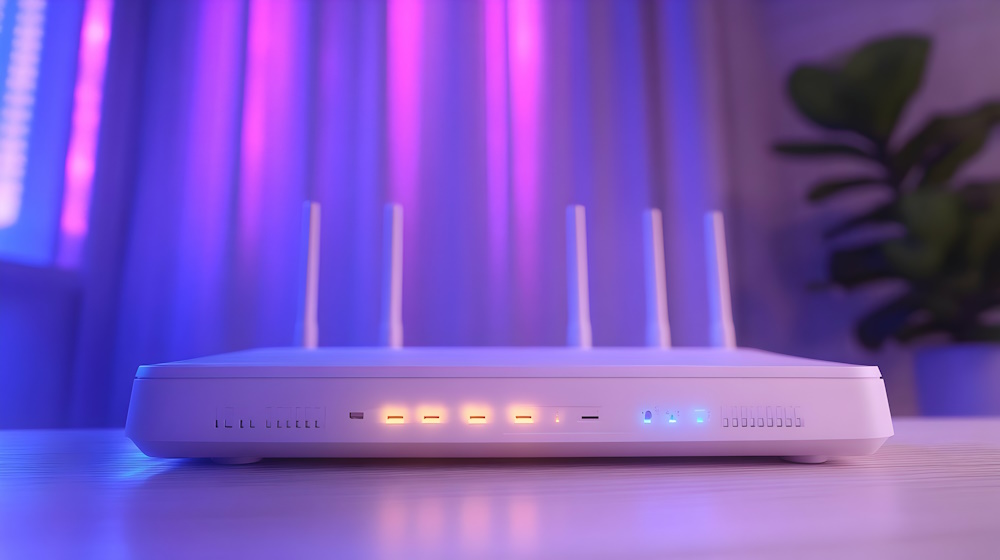Modem vs Router: Understanding the Key Differences
Thu Jan 23 2025
|netservicesLearn the key differences between modems and routers, their roles in your home network, and how to choose the right devices for fast and secure internet.

In today’s connected world, having a reliable internet connection is crucial. But have you ever wondered about the devices that make this connection possible? Two essential components of any home network are the modem and the router. While these terms are often used interchangeably, they actually serve different purposes. Let’s dive into the world of modems and routers to understand their roles, differences, and why you might need both.
What is a Modem?
A modem, short for modulator-demodulator, is your gateway to the internet. It’s the device that connects your home network to your Internet Service Provider (ISP). Think of it as a translator between your home network and the vast internet beyond.
Modems work by converting the digital signals from your computer into analog signals that can travel over telephone or cable lines. When information comes back from the internet, the modem converts these analog signals back into digital data your devices can understand.
There are several types of modems, including:
- A DSL modem (for telephone line connections)
- A Cable modem (for cable TV line connections)
- A Fiber-optic modem (for fiber-optic connections)
Each type of modem is designed to work with a specific kind of internet service, so you’ll need to use a modem that matches your ISP’s technology.
What is a Router?
A router, on the other hand, is like a traffic director for your home network. It takes the internet connection from your modem and distributes it to multiple devices in your home. This is what allows you to connect your smartphone, laptop, smart TV, and other devices to the internet at the same time.
Routers create a local area network (LAN) in your home or office. They assign unique IP addresses to each connected device, ensuring that data packets reach the right destination. Most modern routers also provide Wi-Fi capabilities, allowing devices to connect wirelessly.
Key functions of a router include:
- Network address translation (NAT) for sharing a single internet connection
- Firewall protection to guard against potential threats
- Quality of Service (QoS) features to prioritize certain types of internet traffic
Some routers come with additional features like parental controls, guest networks, and VPN support.
Key Differences Between Modems and Routers
Now that we’ve covered the basics, let’s highlight the main differences between modems and routers:
- Function: A modem connects you to the internet, while a router distributes that connection to multiple devices.
- Connectivity: Modems typically have one Ethernet port to connect to a router or computer. Routers have multiple ports to connect directly to multiple devices via an ethernet cable and often provide Wi-Fi.
- ISP Interaction: Your ISP communicates directly with your modem, but not with your router.
- Network Creation: Modems don’t create a network; routers do.
- Security: Routers provide firewall protection and other security features, while modems generally don’t.
- IP Address Management: Routers assign local IP addresses to devices on your network, while modems work with the public IP address assigned by your ISP.
Do You Need Both a Modem and a Router?
In most cases, you need both a modem and a router for a complete home network setup. Here’s why:
- Internet Access: The modem is essential for connecting to the internet through your ISP.
- Multiple Device Connectivity: If you want to connect more than one device to the internet, you’ll need a router to create a network.
- Wi-Fi: Most standalone modems don’t provide Wi-Fi, so you’ll need a router for wireless connectivity.
- Network Security: Routers offer important security features that modems typically don’t provide.
However, there are some exceptions. Some ISPs offer combined modem-router units, often called gateways. These devices perform both functions in a single box. While convenient, they may offer less flexibility and control compared to separate router and modem devices.
Modem-Router Combos: Pros and Cons
Modem-router combos, or gateways, are becoming increasingly popular. Let’s look at their advantages and disadvantages:
Pros:
- Space-saving: One device instead of two
- Cost-effective: Often cheaper than buying a separate modem and router
- Simplified setup: Less wiring and configuration required
Cons:
- Less flexibility: Harder to upgrade individual components
- Potential performance issues: May not perform as well as two separate high-quality devices
- Reliability concerns: If one part fails, you lose both functions
Whether a combo device is right for you depends on your specific needs, budget, and technical comfort level.
Choosing the Right Modem and Router
When selecting a modem and router (or a combo device), consider the following factors:
- Internet Speed: Ensure your modem supports the speeds offered by your ISP.
- Compatibility: Check that the modem is compatible with your ISP’s network.
- Wi-Fi Standards: For routers, look for modern standards like Wi-Fi 5 (802.11ac) or Wi-Fi 6 (802.11ax) for better performance.
- Number of Devices: Choose a router that can handle the number of devices you plan to connect.
- Coverage Area: Consider mesh network systems for larger homes or areas with Wi-Fi dead zones to spread your internet connection throughout a larger area.
- Special Features: Look for features like parental controls, guest networks, or VPN support if you need them.
- Future-Proofing: Consider slightly higher-end models to accommodate future speed increases or technology changes.
Setting Up Your Modem and Router
Setting up your modem and router doesn’t have to be complicated. Here’s a basic guide:
- Connect the modem to your internet source (cable, phone line, etc.).
- Power on the modem and wait for it to fully boot up.
- Connect the router to the modem using an Ethernet cable.
- Power on the router and wait for it to initialize.
- Follow your router’s instructions to set up your Wi-Fi network.
- Connect your devices and enjoy your internet connection!
Remember to secure your network by setting a strong Wi-Fi password and keeping your router’s firmware updated.
Troubleshooting Common Issues
Even with the best setup, you might encounter some issues. Here are some common problems and solutions:
- No internet connection: Try restarting both your modem and router.
- Slow speeds: Check for interference, update firmware, or consider upgrading your equipment.
- Limited Wi-Fi range: Reposition your router or consider adding Wi-Fi extenders.
- Connection drops: This could be due to overheating, outdated firmware, or ISP issues.
If problems persist, contact your ISP or consult a networking professional.
The Future of Home Networking
As technology evolves, so do modems and routers. We’re seeing trends like:
- Increased integration of smart home features
- Adoption of new Wi-Fi standards for faster speeds and better coverage
- Enhanced security measures to protect against cyber threats
- Greater emphasis on user-friendly interfaces and app-based management
Staying informed about these developments can help you make better decisions about your home network setup.
Understanding the difference between modems and routers is key to creating an efficient and effective home network. While they serve different purposes, both are crucial components in bringing the internet into your home and distributing it to your devices. By choosing the right equipment and setting it up correctly, you can ensure a smooth, fast, and secure internet experience for all your online activities.



